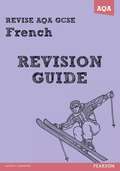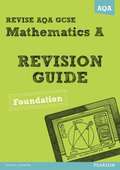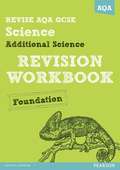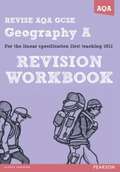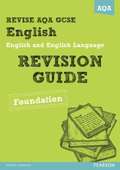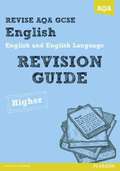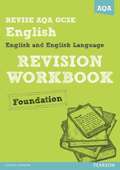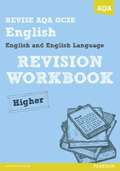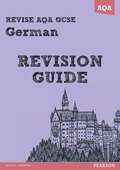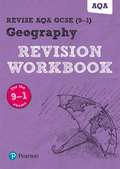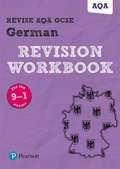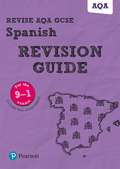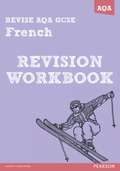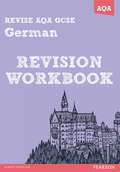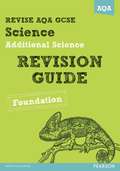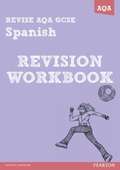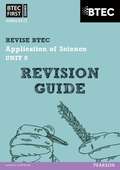- Table View
- List View
The respiration cycle - front view (UEB Contracted)
There are two diagrams on the page, one on the top half and one on the bottom half of the page, and they both show the lungs and other contents of the chest in diagrammatic form. They are separated by a thin dashed line. A locator dot and title are shown. These must always be at the top left of the page when the image is the right way up. The top diagram shows the principle of breathing in. The ribs and intercostal muscles have lifted; the diaphragm is pushing down. This increases the capacity of the chest and air goes in. The bottom diagram shows the principle of breathing out. The ribs and intercostal muscles have moved downwards; the diaphragm has relaxed and moved up. This decreases the capacity of the chest, and air goes out.
The respiration cycle - front view (UEB Uncontracted)
There are two diagrams on the page, one on the top half and one on the bottom half of the page, and they both show the lungs and other contents of the chest in diagrammatic form. They are separated by a thin dashed line. A locator dot and title are shown. These must always be at the top left of the page when the image is the right way up. The top diagram shows the principle of breathing in. The ribs and intercostal muscles have lifted; the diaphragm is pushing down. This increases the capacity of the chest and air goes in. The bottom diagram shows the principle of breathing out. The ribs and intercostal muscles have moved downwards; the diaphragm has relaxed and moved up. This decreases the capacity of the chest, and air goes out.
The respiration cycle - side view (Large Print)
There are two diagrams on the page, one on the top half and one on the bottom half of the page, they both show the lungs and other contents of the chest in diagrammatic form. They are separated by a thin dashed line. A locator dot and title are shown. These must always be at the top left of the page when the image is the right way up. The top diagram shows the principle of breathing in. The rib and sternum have lifted; the diaphragm is pushing down. This increases the capacity of the chest and air goes in. The bottom diagram shows the principle of breathing out. The rib and sternum have moved downwards; the diaphragm has relaxed and moved up. This decreases the capacity of the chest and air goes out.
The respiration cycle - side view (UEB Contracted)
There are two diagrams on the page, one on the top half and one on the bottom half of the page, they both show the lungs and other contents of the chest in diagrammatic form. They are separated by a thin dashed line. A locator dot and title are shown. These must always be at the top left of the page when the image is the right way up. The top diagram shows the principle of breathing in. The rib and sternum have lifted; the diaphragm is pushing down. This increases the capacity of the chest and air goes in. The bottom diagram shows the principle of breathing out. The rib and sternum have moved downwards; the diaphragm has relaxed and moved up. This decreases the capacity of the chest and air goes out.
The respiration cycle - side view (UEB Uncontracted)
There are two diagrams on the page, one on the top half and one on the bottom half of the page, they both show the lungs and other contents of the chest in diagrammatic form. They are separated by a thin dashed line. A locator dot and title are shown. These must always be at the top left of the page when the image is the right way up. The top diagram shows the principle of breathing in. The rib and sternum have lifted; the diaphragm is pushing down. This increases the capacity of the chest and air goes in. The bottom diagram shows the principle of breathing out. The rib and sternum have moved downwards; the diaphragm has relaxed and moved up. This decreases the capacity of the chest and air goes out.
Resultant and balanced forces (large print)
by Rnib BookshareThis page shows three diagrams separated by two light vertical dashed lines. There is a locator dot shown, which will be at the top left of the page when the image is the right way up. The top diagrams show separate forces acting on three objects. The bottom diagrams show the resultant force (labelled in Newtons) on the same three objects respectively. The diagram on the left shows a block shape at the top of the page with two arrows in a line pointing to the right, and another arrow slightly down. At the bottom of the page, the same block is shown with a line of three arrows pointing to the right. The diagram in the centre shows an ellipse shape at the top of the page with two arrows pointing up and two in a line pointing down. The same ellipse is shown at the bottom of the page with no arrows. The diagram to the right shows a block shape at the top of the page with two arrows in a line pointing to the left and one pointing to the right. The same block is shown at the bottom of the page with one arrow pointing to the left.
Resultant and balanced forces (UEB contracted)
by Rnib BookshareThis page shows three diagrams separated by two light vertical dashed lines. There is a locator dot shown, which will be at the top left of the page when the image is the right way up. The top diagrams show separate forces acting on three objects. The bottom diagrams show the resultant force (labelled in Newtons) on the same three objects respectively. The diagram on the left shows a block shape at the top of the page with two arrows in a line pointing to the right, and another arrow slightly down. At the bottom of the page, the same block is shown with a line of three arrows pointing to the right. The diagram in the centre shows an ellipse shape at the top of the page with two arrows pointing up and two in a line pointing down. The same ellipse is shown at the bottom of the page with no arrows. The diagram to the right shows a block shape at the top of the page with two arrows in a line pointing to the left and one pointing to the right. The same block is shown at the bottom of the page with one arrow pointing to the left.
Resultant and balanced forces (UEB uncontracted)
by Rnib BookshareThis page shows three diagrams separated by two light vertical dashed lines. There is a locator dot shown, which will be at the top left of the page when the image is the right way up. The top diagrams show separate forces acting on three objects. The bottom diagrams show the resultant force (labelled in Newtons) on the same three objects respectively. The diagram on the left shows a block shape at the top of the page with two arrows in a line pointing to the right, and another arrow slightly down. At the bottom of the page, the same block is shown with a line of three arrows pointing to the right. The diagram in the centre shows an ellipse shape at the top of the page with two arrows pointing up and two in a line pointing down. The same ellipse is shown at the bottom of the page with no arrows. The diagram to the right shows a block shape at the top of the page with two arrows in a line pointing to the left and one pointing to the right. The same block is shown at the bottom of the page with one arrow pointing to the left.
Revise AQA: GCSE French Revision Guide (PDF)
by Julie GreenRevise smart and save! This Revision Guide delivers hassle-free exam preparation, covering one topic per page and closely matching the AQA specification.
Revise AQA: Revision Guide Foundation (PDF)
by Harry SmithRevise smart and save! This Revision Guide delivers hassle-free exam preparation, covering one topic per page and closely matching the AQA specification. Target grades on the page help you to progress at the right speed. Exam Alerts highlight common pitfalls and misconceptions in exam questions. With one-to-one page correspondence between this Guide and the companion Workbook, this hugely popular Revision series offers the best value available for GCSE students.
Revise AQA CGSE Additional Science: Revision Workbook Foundation (PDF)
by Mike O'Neil Iain BrandThis Revision Workbook delivers question practice, covering one topic per page and closely matching the AQA specification.
Revise AQA GCSE: Revision Workbook (PDF)
by Rob BircherFor the linear specification first teaching 2012. This Revision Workbook delivers question practice, covering one topic per page and closely matching the AQA specification.
Revise AQA GCSE: Foundation (PDF)
by David GrantThis Revision Guide delivers hassle-free exam preparation for Unit 1 and closely matches the AQA specification.
Revise AQA GCSE: Higher (PDF)
by David GrantThis Revision Guide delivers hassle-free exam preparation for Unit 1 and closely matches the AQA specification.
Revise AQA GCSE: Revision Workbook - Foundation
by David GrantThis Revision Workbook delivers hassle-free exam preparation Unit 1 and closely matches the AQA specification.
Revise AQA GCSE: Higher (PDF)
by David GrantThis Revision Workbook delivers hassle-free exam preparation Unit 1 and closely matches the AQA specification.
Revise AQA GCSE: Revision Guide (PDF)
by Harriette LanzerThis Revision Guide delivers hassle-free exam preparation, covering one topic per page and closely matching the AQA specification.
Revise AQA GCSE (9-1) Geography: Revision Workbook (PDF)
by Rob BircherRevise AQA GCSE (9-1) Geography: Revision Workbook.
Revise AQA GCSE (9-1) German: Revision Workbook (PDF)
by Harriette LanzerThe one topic-per-page format provides hassle-free revision for students with no lengthy set-up time and no complex revision concepts Target grades on the page allow students to progress at a speed that is right for them One-to-one page correspondence between the Revision Guide and Revision Workbook ensures they're easy to use together. Audio files available FREE on a companion site provide realistic question practice.
Revise AQA GCSE (9–1), Spanish: Revision Guide (PDF)
by Vivien HalksworthThe one topic-per-page format provides hassle-free revision for students with no lengthy set-up time and no complex revision concepts. Target grades on the page allow students to progress at a speed that is right for them. One-to-one page correspondence between the Revision Guide and Revision Workbook ensures they’re easy to use together.
Revise AQA GCSE French: revision workbook (PDF)
by Stuart GloverRevise smart and save! This Revision Workbook delivers hassle-free question practice, covering one topic per page and avoiding lengthy set up time. Build your confidence with guided practice questions, before moving onto unguided questions and practice exam papers.
Revise AQA GCSE German: revision workbook (PDF)
by Oliver Gray Harry Smith Harriette LanzerRevise smart and save! This Revision Workbook delivers hassle-free question practice, covering one topic per page and avoiding lengthy set up time. Build your confidence with guided practice questions, before moving onto unguided questions and practice exam papers.
Revise AQA GCSE Science: Revision Guide Foundation (PDF)
by Peter Ellis Nigel Saunders Susan KearseyThis Revision Guide delivers exam preparation, covering one topic per page and closely matching the AQA specification.
Revise AQA GCSE Spanish: revision workbook (PDF)
by Jacqui LopezRevise smart and save! This Revision Workbook delivers hassle-free question practice, covering one topic per page and avoiding lengthy set up time. Build your confidence with guided practice questions, before moving onto unguided questions and practice exam papers.
Revise BTEC First Award: Revision Guide (PDF)
by Jennifer Stafford-BrownThe guide is organised by the assessment structure of the qualification and gives students guidance on the external assessment.

